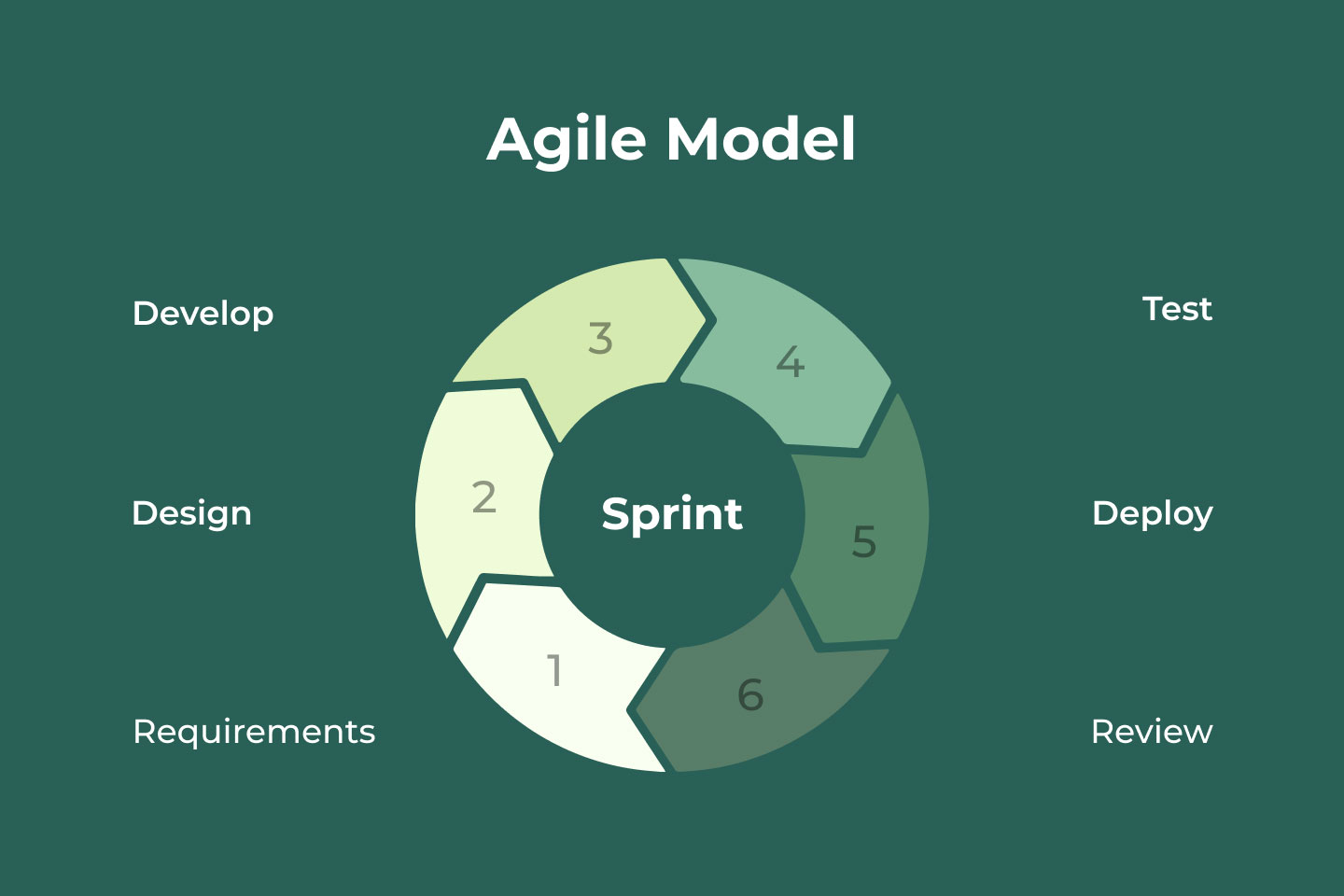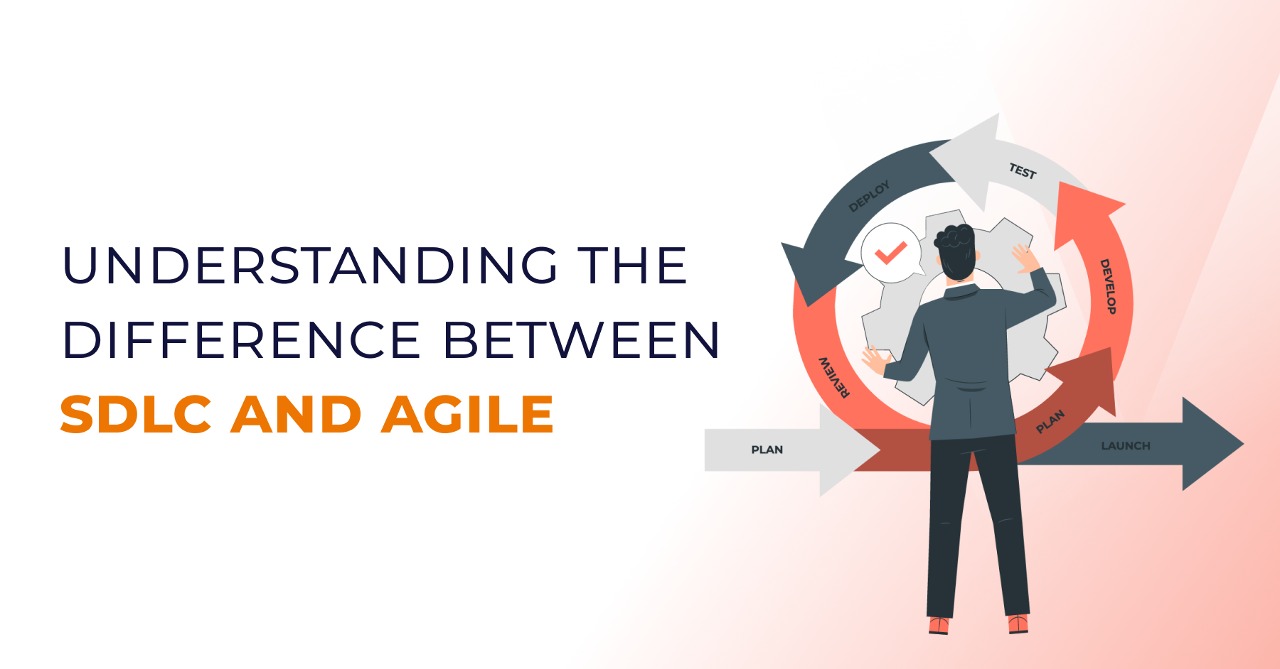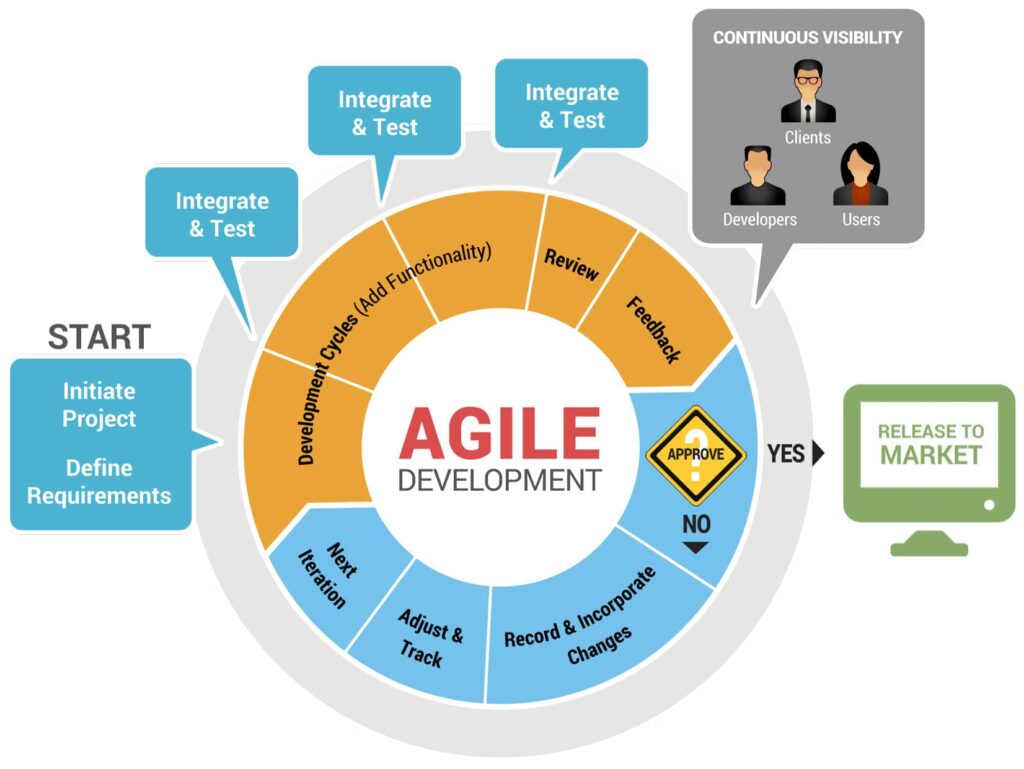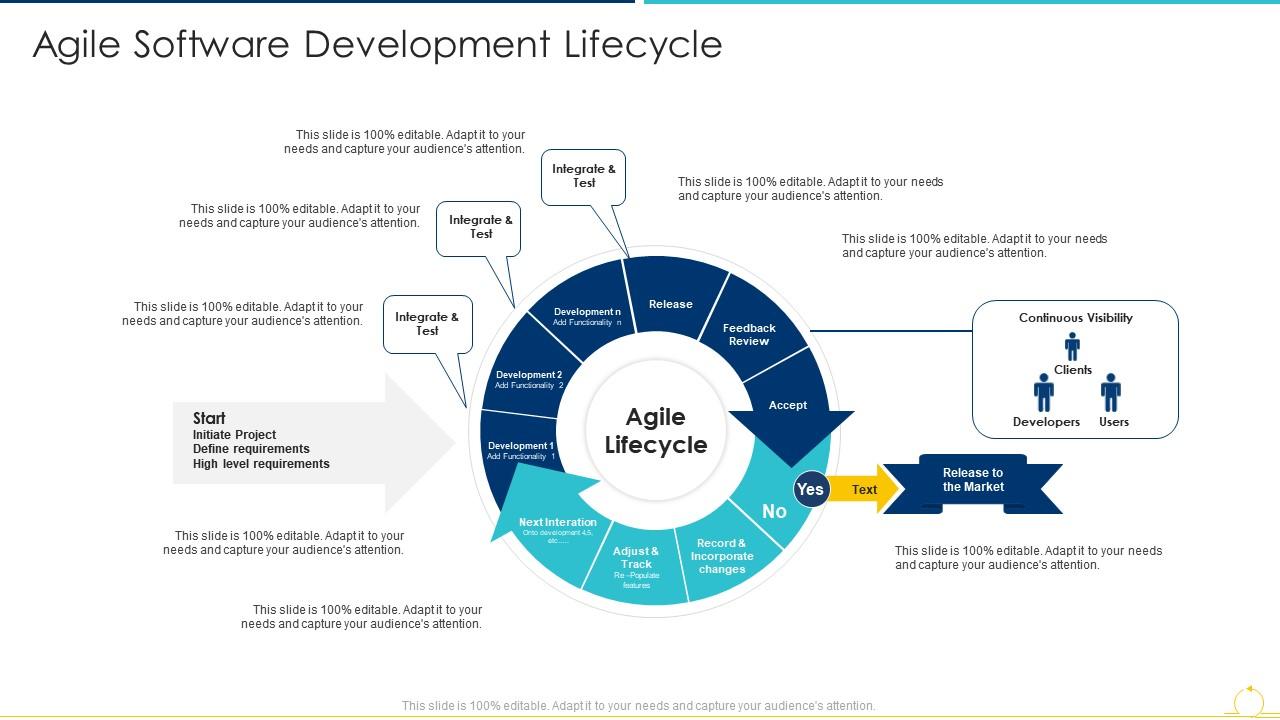Understanding Software Development Life Cycle (SDLC) and Agile Methodologies
Selecting the appropriate software development methodology is crucial for the success of any software development project. Two popular approaches are Software Development Life Cycle (SDLC) and Agile. SDLC is a traditional, linear, and sequential methodology, while Agile is a flexible, iterative, and adaptive framework. Both methodologies have their unique strengths and weaknesses, making it essential to understand their differences and similarities before making a decision.
SDLC and Agile share a common goal: delivering high-quality software that meets user needs and expectations. However, they differ in their execution and focus. SDLC is a structured approach that follows a pre-defined series of phases, including planning, analysis, design, implementation, testing, and maintenance. In contrast, Agile embraces change and adapts to evolving requirements through continuous feedback and improvement loops.
Choosing the right methodology depends on factors such as project complexity, team expertise, and stakeholder expectations. By understanding the nuances of SDLC and Agile, development teams can select the most suitable approach for their specific needs and set themselves up for success in their software development projects.
Breaking Down SDLC: A Sequential Approach to Software Development
Software Development Life Cycle (SDLC) is a traditional, linear, and sequential software development methodology. SDLC consists of distinct phases, each with specific goals and deliverables. These phases include:
- Planning: Define project objectives, scope, and requirements.
- Analysis: Gather and document detailed system requirements.
- Design: Create a detailed system design based on requirements.
- Implementation: Develop the software based on the design.
- Testing: Validate the software to ensure it meets requirements.
- Maintenance: Provide ongoing support, updates, and bug fixes.
SDLC offers several advantages, particularly for projects with well-defined requirements and low to medium risk. Its structured approach helps ensure that projects are completed on time and within budget. SDLC also facilitates thorough documentation, making it easier to maintain and support the software over its lifecycle. Additionally, the sequential nature of SDLC allows for clear role definition and task allocation, promoting efficient resource utilization.
However, SDLC has its limitations. Its sequential nature can make it inflexible and slow to respond to changing requirements. Moreover, the emphasis on upfront planning and design may lead to a lack of user involvement, potentially resulting in software that does not fully meet user needs. Despite these limitations, SDLC remains a popular and effective methodology for many software development projects, particularly those with stable and well-understood requirements.
Exploring Agile: A Flexible and Iterative Approach to Software Development
Agile is a flexible and iterative software development methodology that emphasizes collaboration, customer satisfaction, and adaptability. Agile focuses on delivering functional software in short iterations or sprints, allowing for continuous feedback and improvement. The Agile Manifesto outlines four key values:
- Individuals and interactions over processes and tools
- Working software over comprehensive documentation
- Customer collaboration over contract negotiation
- Responding to change over following a plan
Agile encompasses various frameworks, such as Scrum, Kanban, and Lean, each with its unique practices and terminology. However, all Agile methodologies share common principles, including:
- Collaboration: Close collaboration between cross-functional teams and stakeholders
- Iterative development: Frequent, short development cycles with continuous feedback and improvement
- Adaptability: Embracing change and adapting to evolving requirements
- Simplicity: Focusing on delivering the most value with the least effort
Agile is particularly suitable for projects with rapidly changing requirements and high risk. Its iterative nature allows for quick response to changing needs, while continuous feedback ensures that the software meets user expectations. Agile also promotes a culture of continuous learning and improvement, fostering innovation and high-performing teams.
How to Choose Between SDLC and Agile: A Decision-Making Framework
Selecting the appropriate software development methodology is crucial for project success. To help choose between SDLC and Agile, consider the following decision-making framework:
- Assess project complexity: If the project has well-defined requirements and low to medium risk, SDLC may be more suitable. However, if the project has rapidly changing requirements or high risk, Agile might be a better fit.
- Evaluate team expertise: Consider the team’s familiarity with each methodology. If the team has extensive experience with SDLC, it may be more efficient to continue with that approach. If the team is new to both methodologies, investing in Agile training might be beneficial due to its adaptability and continuous learning focus.
- Consider stakeholder expectations: Discuss the project’s goals and requirements with stakeholders. If stakeholders prefer a structured, predictable approach, SDLC may be more suitable. If stakeholders value flexibility and quick response to changing needs, Agile might be a better choice.
- Balance documentation needs: SDLC typically involves extensive documentation, which can be beneficial for maintenance and support. However, if the project requires rapid iteration and frequent changes, Agile’s lighter documentation approach might be more efficient. Consider the project’s documentation needs and balance them against the team’s capacity to produce and maintain these documents.
- Plan for feedback and adaptation: Both methodologies can accommodate feedback and adaptation, but to different degrees. SDLC allows for feedback at specific phases, while Agile encourages continuous feedback throughout the project. Determine the appropriate level of feedback and adaptation required for the project and select the methodology that best supports these needs.
By carefully considering these factors, development teams can make an informed decision about which methodology—SDLC, Agile, or a hybrid approach—is best suited for their specific project and organizational needs.
Success Stories: Real-World Examples of SDLC and Agile Implementations
Exploring successful implementations of SDLC and Agile methodologies can provide valuable insights for development teams. Here are two examples showcasing the key factors contributing to their success:
SDLC Success Story: Space Shuttle Software Development
The Space Shuttle program, developed using the SDLC methodology, is a prime example of a successful project with well-defined requirements and low to medium risk. The project’s success can be attributed to:
- Thorough planning and documentation: The extensive planning and documentation phases ensured that all requirements were clearly defined and understood by all stakeholders.
- Clear role definition: The sequential nature of SDLC facilitated clear role definition and task allocation, promoting efficient resource utilization.
- Rigorous testing: The rigorous testing phase identified and addressed any issues before deployment, ensuring the software’s reliability and safety.
Agile Success Story: Spotify’s Agile Transformation
Spotify, a music streaming platform, successfully adopted Agile principles to manage its rapidly changing requirements and high-risk projects. Key factors contributing to their success include:
- Cross-functional teams: Spotify organized its teams into small, cross-functional squads, allowing for quick decision-making and efficient collaboration.
- Autonomy and flexibility: Squads were given autonomy to choose their tools, processes, and practices, fostering a culture of innovation and continuous learning.
- Continuous delivery: Spotify implemented Continuous Integration/Continuous Deployment (CI/CD) practices, enabling rapid iteration and quick response to changing requirements.
These success stories demonstrate the importance of selecting the right methodology for specific project needs and the value of adapting practices to suit the unique context of each organization.
Navigating Challenges: Common Pitfalls and Solutions in SDLC and Agile Adoption
Despite their benefits, SDLC and Agile methodologies can present challenges during adoption. Here are some common pitfalls and solutions to help organizations overcome these hurdles:
SDLC Challenges and Solutions
- Inflexibility: SDLC’s sequential nature can make it challenging to accommodate changes once a phase is complete. To mitigate this, encourage regular communication between phases and allow for minor adjustments as needed.
- Overemphasis on documentation: Excessive documentation can lead to wasted time and resources. Strike a balance between thorough documentation and efficient communication, focusing on the most critical deliverables.
Agile Challenges and Solutions
- Lack of upfront planning: Agile’s iterative nature can lead to insufficient initial planning. Implement lightweight planning techniques, such as Impact Mapping or User Story Mapping, to ensure a solid foundation for each sprint.
- Inadequate documentation: While Agile promotes “just enough” documentation, neglecting documentation can result in knowledge gaps and maintenance issues. Encourage teams to maintain living documentation that evolves with the project.
By acknowledging these challenges and implementing practical solutions, organizations can successfully adopt SDLC and Agile methodologies, fostering a culture of continuous improvement and learning.
Continuous Improvement: Integrating SDLC and Agile with DevOps and CI/CD Practices
Integrating SDLC and Agile methodologies with DevOps and Continuous Integration/Continuous Deployment (CI/CD) practices can lead to a culture of continuous improvement and learning. This integration results in a more efficient, collaborative, and high-performing software development lifecycle. Here’s how to make it happen:
1. Promote cross-functional collaboration:
Encourage close collaboration between development, operations, and quality assurance teams. This collaboration ensures seamless communication, shared responsibility, and swifter problem-solving.
2. Adopt CI/CD practices:
Implement Continuous Integration and Continuous Deployment practices to automate testing, build, and deployment processes. This automation leads to faster feedback loops, fewer errors, and accelerated delivery cycles.
3. Implement version control and configuration management:
Version control systems, such as Git, enable teams to manage code changes effectively. Configuration management tools, like Ansible or Puppet, help automate infrastructure setup and maintenance, ensuring consistency and repeatability.
4. Monitor and measure performance:
Leverage monitoring and measurement tools to track application and infrastructure performance. This data-driven approach helps identify bottlenecks, optimize resources, and make informed decisions based on real-world insights.
5. Foster a culture of learning and improvement:
Encourage teams to embrace a growth mindset, learn from failures, and continuously refine their processes. Regular retrospectives, workshops, and knowledge-sharing sessions can help establish a culture of continuous learning and improvement.
By integrating SDLC, Agile, DevOps, and CI/CD practices, organizations can create a cohesive, efficient, and adaptable software development environment, driving innovation and long-term success.
The Future of Software Development: Trends and Innovations in SDLC and Agile
Software development is an ever-evolving field, with new trends and innovations continuously shaping the way we approach SDLC and Agile methodologies. Here are some emerging trends and their potential impact on software development projects:
1. Value Stream Mapping:
Value Stream Mapping is a lean management technique that helps visualize the entire software development process, from inception to deployment. By identifying bottlenecks, waste, and inefficiencies, teams can optimize their workflows and deliver more value to stakeholders.
2. Data-Driven Decision-Making:
Data-driven decision-making involves leveraging analytics and metrics to inform development choices. By analyzing performance data, teams can make more informed decisions about architecture, design, and resource allocation, ultimately leading to better software outcomes.
3. Artificial Intelligence (AI) and Machine Learning (ML):
AI and ML technologies can automate various aspects of software development, from code generation and testing to maintenance and optimization. By integrating AI and ML into the SDLC and Agile processes, teams can improve efficiency, reduce errors, and focus on higher-value tasks.
4. Low-Code and No-Code Platforms:
Low-code and no-code platforms enable non-technical users to create and deploy software applications with minimal coding knowledge. These platforms can help accelerate development cycles, democratize software creation, and free up technical teams to focus on more complex tasks.
5. Remote and Distributed Teams:
The rise of remote and distributed teams has led to the increased adoption of virtual collaboration tools and asynchronous communication methods. Embracing these trends can help SDLC and Agile teams collaborate effectively, regardless of location or time zone.
By staying informed about these trends and innovations, software development teams can continuously improve their processes, adapt to changing circumstances, and deliver high-quality software solutions that meet the evolving needs of their stakeholders.





